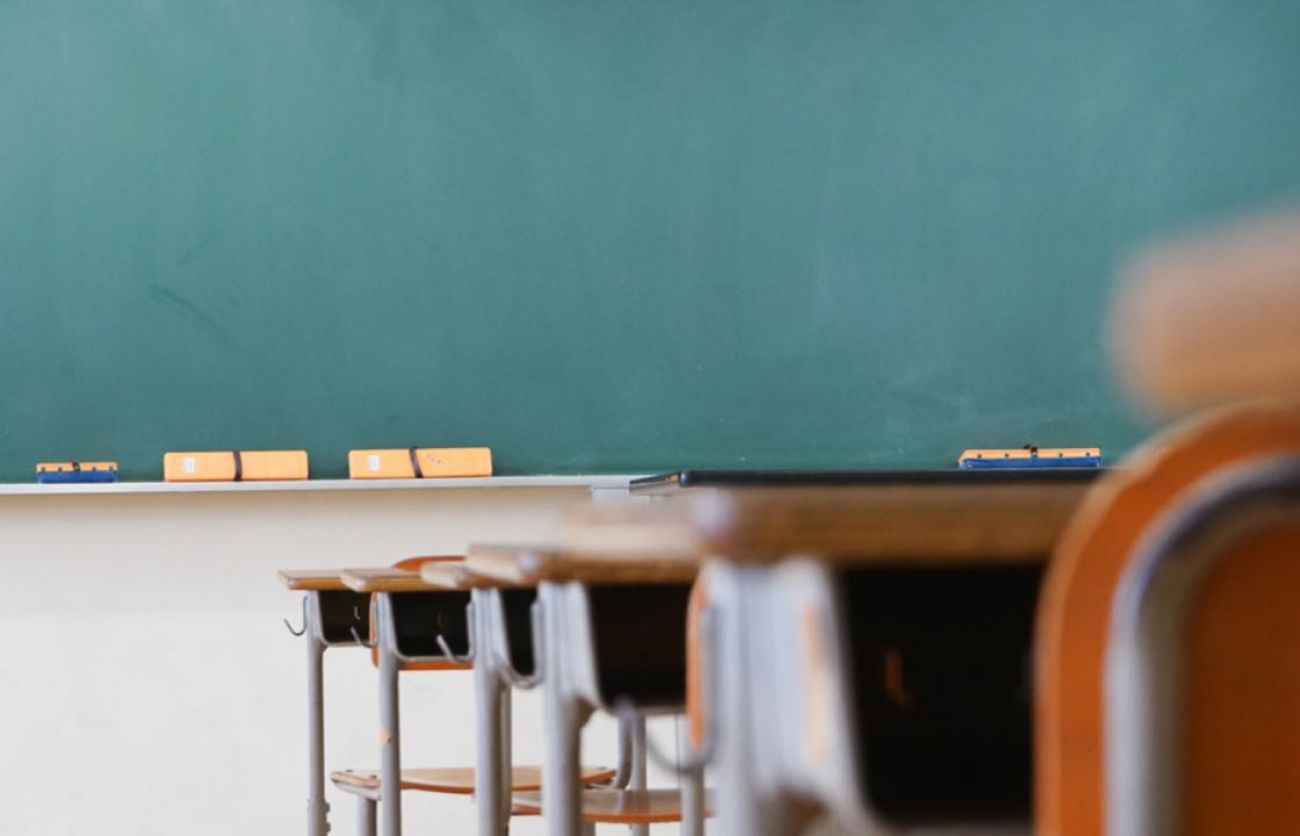GOP leader: Up to 25 percent cuts to Michigan schools from coronavirus

The chair of the Senate committee that sets the K-12 school budget has a dire warning for Michigan schools: Prepare for a crippling decline in state funding.
Wayne Schmidt, R-Traverse City, said Monday that he has told school officials in recent meetings to “prepare for the worst” budget in decades — a possible cut in the per-pupil foundation grant schools receive of 20 to 25 percent in the 2020-21 state budget, which must be approved before Oct. 1.
A 25 percent cut is the equivalent of a loss of about $2,000 from the roughly $8,000 schools received per enrolled student this year.
Kurt Weiss, spokesperson for the Department of Technology, Management and Budget, acknowledged that “devastating cuts to education and other key priorities are a real possibility” because of the crushing economic blow of the coronavirus-caused lockdown on businesses.
- The latest: Michigan coronavirus map, curve, chart, updated COVID-19 news
- Gov. Whitmer extends Michigan coronavirus stay-at-home order to May 28
- Whitmer reopens Michigan from coronavirus in phases: What that means to you
More than a million Michigan workers have filed for unemployment since mid-March. Tax revenue — that funds schools and other services — is likely to have dropped sharply.
The best glimpse yet of the extent of the damage to the state budget, and the impact on schools and other state-funded services, will be known Friday, with the release of the consensus revenue estimating conference report.
Even before that report is released, though, budget talks are underway.
Schmidt, who chairs the Senate K12 Appropriations Subcommittee, said his top priority is protecting the foundation grant, which provides about 75 percent of Michigan school districts’ general funds.
“But there’s no way around” cutting per-pupil funding.
“We’re looking at cuts (of per pupil funding) of 10 to 30 percent,” Schmidt said. “Ten percent would be a huge hit. I’d say 20-25 percent range is more likely.”
While Schmidt’s projections are dire, they are also preliminary. State budgets must be approved by the Senate and House and the governor, and there are usually intense negotiations.
The biggest one-year decrease in recent memory was in 2011, when the foundation grant dropped 7 percent, a $470 cut of the $6,856 per-pupil funding, according to State Superintendent Michael Rice.
“That cut was extremely hard for many school districts, many of which have never returned to pre-2011 service levels,” Rice said in an emailed response to Bridge Magazine.
“A 20 to 25 percent cut — between $1,622 and $2,028 per pupil next year — would have a devastating effect on our children and our schools. A cut of that magnitude would be wholly unacceptable.”
Those cuts would have to be implemented in a year when schools will already be under intense pressure. Students will return in the fall after being out of classrooms for almost six months because of the coronavirus pandemic. School officials acknowledge that an extended absence from classrooms will likely lead to substantial learning loss, especially among low-income children and students who do not have access to high-speed Internet in their homes.
In addition to attempting to mitigate those learning gaps, schools will need to implement new health and safety features to try to limit the spread of the potentially deadly virus, said Scott Menzel, superintendent of Washtenaw Intermediate School District.
“I don’t know how any district can provide enhanced screening protocols in a COVID environment, attempt some modicum of social distancing, navigate logistics of transportation, food service and remain financially viable with that kind of reduction in funding,” Menzel said in an emailed response to Bridge.
“If education is a priority, and I would argue it should be very high on the list if we hope to restart the economy and ensure our children are prepared to be successful as they move through the system, then efforts must be put in place to protect against this type of drastic reduction in funding.”
A loss of about $2,000 per student in state funding — the equivalent of close to 20 percent of the average Michigan school district’s general fund in 2019 — would likely require teacher layoffs, Menzel said. That would mean cramming more students into fewer classrooms at a time schools are concerned about social distancing because of the pandemic, or a continuation of some online classes so that one teacher could instruct a larger number of students.
Several school officials said they questioned whether some school districts would survive such a drastic funding cut.
“Every school district recognizes that we are likely to see a reduction in funding — the economic realities related to the impact of COVID-19 are undeniable,” Menzel said.
“However, our elected officials need to come to the table with more ideas than simply imposing across-the-board reductions that will consign Michigan to the bottom tier of all states in the nation when it comes to supporting the education of our children.”
With the likely loss of several billion dollars in state revenue, the state budget can’t be balanced by nipping around the edges said Craig Thiel, research director at the nonprofit Citizens Research Council of Michigan.
“There’s no escaping you’re going to have to cut tranches of big money,” Thiel said.
Cutting across the board — with funding for every student in every school declining equally — is an easy, equal way to make drastic cuts, Thiel acknowledged, but he argues that students with greater needs should suffer less.
“When we've been adding money, the effort recently has been to add money where it’s most needed,” Thiel said, referencing efforts to increase funding for low-income students and struggling readers. Cuts should be made the same way, Thiel said.
“The bloodletting on the economy has been unprecedented,” Thiel said. “Our point is, you could make the cuts surgically, rather than cut every kid’s foundation [funding] the same.”
One thing that would help schools, said DTMB’s Weiss, is if federal officials loosened restrictions on how federal pandemic stimulus dollars can be spent. Michigan schools received $390 million from the CARES Act, but the money can only be spent on losses directly related to the pandemic, such as increased costs for remote learning; the money can’t be spent to fill budget holes caused by lost state tax revenue.
“We know we will have significant budget challenges,” Weiss said, “which is why we need greater flexibility on existing federal funding that will allow us to use those dollars to replace lost revenue.”
Schmidt, the Senate committee chair, said he is disappointed by the expected cuts to schools.
“We were finally making some strides” in funding,” he said. “But we’re just baling water for the next two years.
“If schools think they’re going to get away with a $200 or $300 foundation grant decrease, that’s just not going to happen.”
Michigan Education Watch
Michigan Education Watch is made possible by generous financial support from:
Subscribe to Michigan Education Watch
See what new members are saying about why they donated to Bridge Michigan:
- “In order for this information to be accurate and unbiased it must be underwritten by its readers, not by special interests.” - Larry S.
- “Not many other media sources report on the topics Bridge does.” - Susan B.
- “Your journalism is outstanding and rare these days.” - Mark S.
If you want to ensure the future of nonpartisan, nonprofit Michigan journalism, please become a member today. You, too, will be asked why you donated and maybe we'll feature your quote next time!






